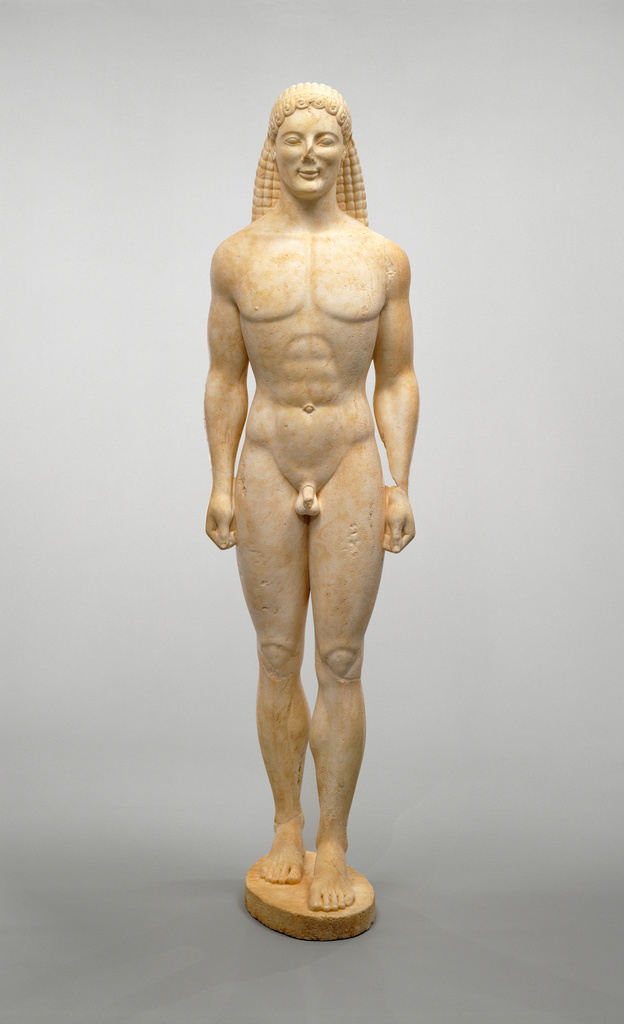“Embrace your authenticity. Be the person God meant for you to be with all your quirkiness and eccentricities.”
The Kouros
In his book “Blink,” Malcom Gladwell recounts the story of the “Getty Kouros.”
getty.edu
In 1984 the J.Paul Getty museum unveiled its latest acquisition, a two thousand year old marble statue of a pattern known as “Kouros.” A Kouros depicts a young man, probably an athlete, standing straight up, one foot forward and his arms hanging at his sides. When the museum was approached to purchase the statue in 1983, an exhaustive 14 month investigation and examination was launched to determine its authenticity.
Finally the statue was deemed authentic and the Getty paid nearly 10 million dollars to purchase the antiquity. It was unveiled in 1984 with great flourish. The New York Times even featured it with a front page story.
Then the problems started. Experts in the field took one look at the statue and felt something was off. They couldn't quite articulate what it was, it just didn't feel right. As more and more experts weighed in, the preponderance of opinion was that the statue was a fake. The provenance the seller provided to the museum began to unravel. Postmarks, dates, stamps, and bank accounts didn't line up with historical records. Ultimately it was determined that the statue most closely resembled the work of a known forger working in Rome in the early 1980s. The statue was beautiful but it was not authentic.
Authenticity
We hear the term “authentic” quite a bit these days. In the new digital age of marketing, people are wary of things, and people, being too slick and polished. What we crave is for people to be authentic, genuine and original.
In philosophical terms to be authentic means that an individual's actions are consistent with their beliefs and desires in spite of external pressure.
In the parable of the prodigal son we are told of the younger heir and his wasteful spending of his inheritance. The word prodigal means to be recklessly extravagant, and the younger son is certainly that. He squanders his fortune and almost looses his life before finally realizing that he would be better off as the least of his father’s servants, and decides to return home.
Perhaps the younger son had lost the sense of his own authenticity. He was too much swayed by a popular idea of what a young man-of-means should be and how he should act. He had forgotten who he was.
God never ceases to call us to discover who we truly are. Each of us has a personal, unique vocation. If we fail to live up to it, if we fail to be “authentic” that vocation will be lost to the world. Are we too much worried about what the world expects us to be, all the while ignoring who God expects us to be? Like the father in the parable, God is always there waiting and hoping for our return to Him. And when we do, when we realize that our lives are meaningless without Him, He is there to welcome us back with kisses and embraces, to robe us with grace and shod us in sandals that betoken our status as His adopted children.
J.J. Tissot
Jacques Joseph Tissot was a painter in the second half of the 19th century. He made his name in Paris and London depicting the lives of the upper classes. He developed a reputation as a painter of elegantly dressed women living a fashionable life. His paintings were featured in salons across Europe and was the recipient of numerous awards. By the standards of the day he was a highly successful artist. He was everything he was expected to be.
But in 1885 at about 49 years of age, Tissot returned to the Catholic faith he was raised in. This coincided with a general French Catholic revival that was a reaction against the secular French Third Republic. Tissot dedicated the rest of his life to painting Biblical scenes from the Old and New Testament. He made several trips to the middle east to study locations, people, and dress, in search of authenticity in his paintings. He felt that at this stage in life he had at last discovered his personal vocation, his true self.
The final resolution of the “Getty Kairos” is still to be determined. The museum's catalog lists it as “about 530 B.C. or modern forgery.” If it is the work of a forger then it represents a tremendous misuse of the artist's gifts. One wonders what the sculptor might have achieved if he had found his true personal vocation.
J.J. Tissot on the other hand, turned his back on a lifetime of work in order to pursue his vocation, his authentic self.
The work of the forger may have been beautiful, but it was not authentic, we are called to be both. We are called to ignore what our popular culture sees as how we should look and act, whether we are artists, teachers, bankers, or accountants. Embrace your authenticity. Be the person God meant for you to be with all your quirkiness and eccentricities. Find the role that only you can fill and the contribution that only you can make. And in the process you will find the unconditional love of God that is the source of Christian joy.
In times of our severest trials, let us remember the Father always knows us, loves, us and reaches out to us, waiting for our return.
Pax Vobiscum
4thSunday in Lent.
Pontifex University is an online university offering a Master’s Degree in Sacred Arts. For more information visit the website at www.pontifex.university
Lawrence Klimecki, MSA, is a deacon in the Diocese of Sacramento. He is a public speaker, writer, and artist, reflecting on the intersection of art and faith and the spiritual “hero’s journey” that is part of every person’s life. He maintains a blog at www.DeaconLawrence.org and can be reached at Lawrence@deaconlawrence.com



